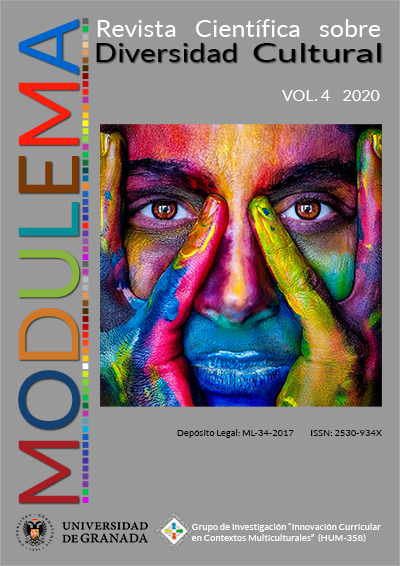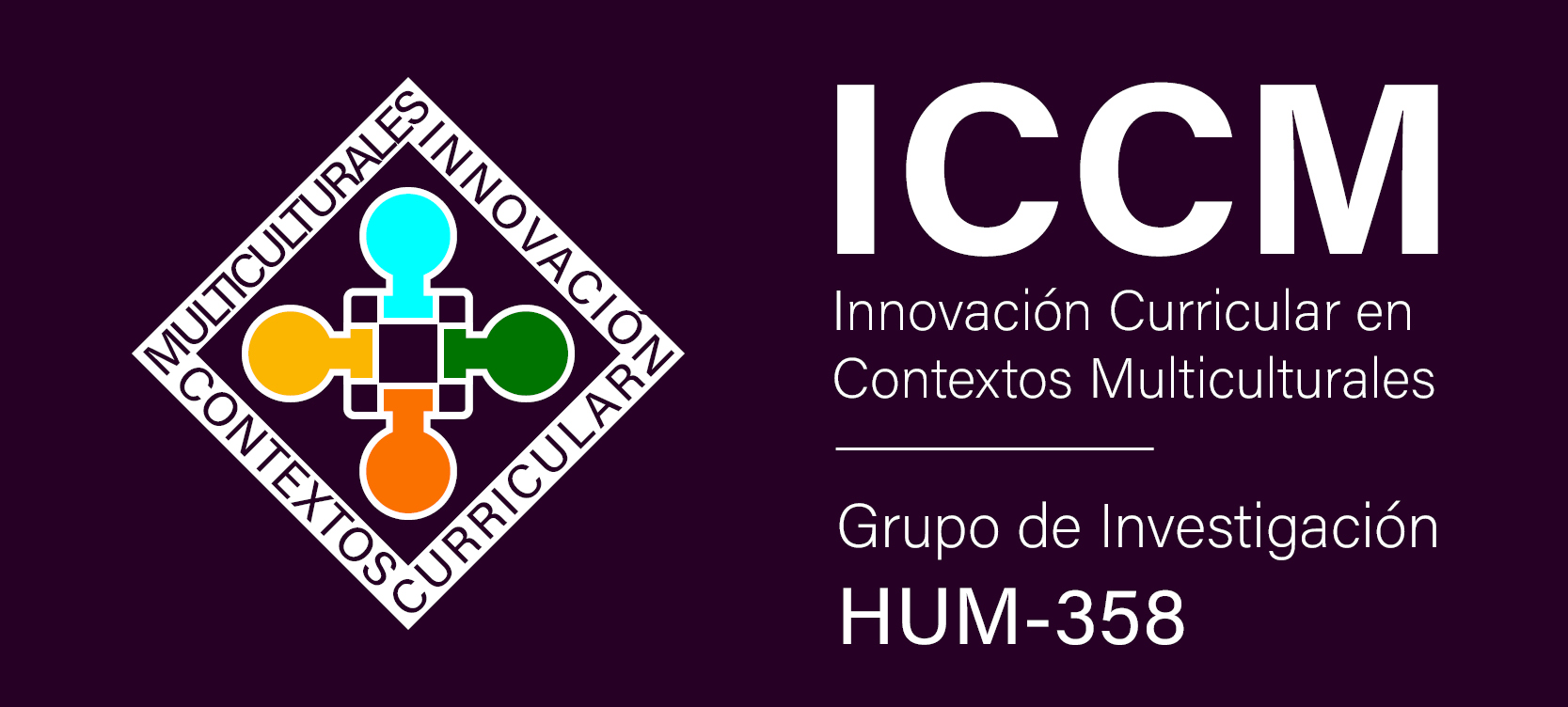ANÁLISIS DEL PROCESO DE COMPRENSIÓN LECTORA DE LOS CUENTOS EN CONTEXTOS INTERCULTURALES
DOI:
https://doi.org/10.30827/modulema.v4i0.13628Palavras-chave:
Comprensión lectora, Interculturalidad, Educación Primaria, DiversidadResumo
El propósito de este artículo es conocer cómo recuerda y comprende elalumnado autóctono e inmigrante los cuentos de la cultura occidental y marroquí contados en español, para introducir el trabajo con los cuentos enun currículo intercultural. Se trata de una investigación llevada a cabo con alumnado español y alumnado de origen marroquí de educación primaria, de la zona del poniente almeriense. Para el análisis de la actividad con los niños, se utilizó el mapa de cuentos (cuestionario) y la gramática del cuento (estructura) para desarrollar la comprensión lectora. Estas dos estrategias, además, de servir para investigar sobre la comprensión y recuerdo de textos, nos permiten desarrollar una educación desde una perspectiva intercultural. A través de la comprensión lectora, y más concretamente, la lectura de cuentos, se conocen los valores y la cultura de diferentes países, facilitando y promoviendo la Educación Intercultural. Las escuelas pueden promover la educación intercultural a través de la enseñanza y aprendizaje de valores, habilidades, actitudes y conocimientos de las diferentes culturas que convivenen los centros educativos.
Downloads
Referências
Acaso, M. (2014). Reduvolution. Hacer la revolución en la educación. Barcelona: Paidós.
Carrasco, S. (2003). La escolarización de los hijos e hijas de inmigrantes y de minorías étnicoculturales. Revista de Educación(330), 99-136.
Colectivo ADARRA (1996). Cuentos de todos los colores. Bilbao.
Colectivo AMANI (1994). Educación Intercultural. Análisis y resolución de conflictos. Madrid:Editorial Popular.
Colomer, T. (1991). De la enseñanza de la literatura a la educación literaria. Comunicación, Lenguaje y Educación, 9, 21-31.
Durana, E., & Bitirb, T. (2019). Increasing Awareness on Dede Korkut and His Stories: An Action Research. International Electronic Journal of Elementary Education (IEJEE), 12(Issue 1), 37-45.
Etxaniz, X. (2011). La transmisión de valores en la literatura, desde la tradición oral hasta la LIJ actual”. Ocnos(7), 73-83.
Gárate Larrea, M. (1994). La comprensión de cuentos en los niños: un enfoque cognitivo y sociocultural. Madrid: Siglo XXI de España.
Jiménez-Rodrigo, M.L., Guzmán-Ordaz, R. (2016). Definiendo a los otros: relatos académicos sobre la diversidad en la escuela. Convergencia Revista de Ciencias Sociales (71).
Jean, G. (1988). El poder de los cuentos. Barcelona: Pirene.
Mandler, J.M., Johnson, N.S.(1977). Remembrance of things parsed. Story structure and recalls. Cognitive Psychology, (9), 111-151.
Martín Rogero, N. (1994). Animación a la lectura: ¿Cuántos cuentos cuentas tú?. Madrid: Editorial Popular.
Molinari Marotto, C.; Duarte, A. (2007). Comprensión del texto narratico e inferencias. Subjetividad y Procesos Cognitivos(10), 163-183.
O´Connor, F. (2016). Para escribir cuentos. Recuperado de: http://textosblog2013.blogspot.com.es/2013/11/el-arte-del-cuento-flannery-oconnor.html
Propp, V. (1928). Morfología del cuento. Madrid: Fundamentos, 1987.
Quesada Villalobos, M. P. (2017). Literatura e interculturalidad: experiencias didácticas en el centro de literatura infantil. Revista do Programa de Pós-graduação em Educação da Unochapecó, 19(40), 68-85. doi: http://dx.doi.org/10.22196/rp.v19i40.3742
Rumelhart, D.E.(1975) Notes on a schema for stories, en D.G. Bobrow y A.Collins. Representation and understanding: studies in cognitive science. Nueva York:Academic Press.
Sandoval Manríquez, M. (2014). Convivencia y clima escolar: claves de la gestión delconocimiento. Última década,12(41). Proyecto Juventudes. 153-178.
Soriano, E. (2003). Diversidad étnica y cultural en las aulas. Madrid: La muralla.
Soriano, E. (1999). La escuela almeriense: un espacio multicultural. Almería: Instituto de estudios almerienses.
Stein, N.L. & Glenn, C.G. (1979). An analysis of story comprehension in elementary school children. En R.V. Freedle (ed.) New directions in discourse processing. Norwood, N.J.Ablex.
Thorndyke, P. W. (1977). Cognitive structures in comprehension and memory of narrative discourse. Cognitive Psychology, 9(1), 77-110.
Vila, R. (2012). ¿Cómo educar en competencias interculturales? España: GREDI.




















